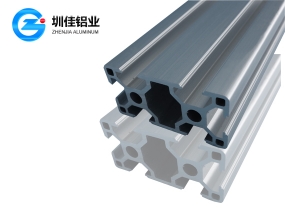(1) Physical treatment method. The three-waste treatment method that separates and recovers insoluble suspended contaminants (including oil film and oil beads) among the three waste materials by physical action. Usually used precipitation, filtration, centrifugal separation, air floatation, evaporation crystallization, reverse osmosis and other methods. The suspended solids, colloids, and oils in the three wastes are separated so that the waste water and waste gas are initially purified, and the waste solids are separated.
 (2) Chemical treatment. Separation through chemical reaction and mass transfer, removal of waste water in the form of dissolved, colloidal contaminants or conversion of wastewater into non-hazardous substances. Usually used methods are: neutralization, coagulation, redox, extraction, stripping, blow-off, adsorption, ion exchange, and electroosmosis.
(2) Chemical treatment. Separation through chemical reaction and mass transfer, removal of waste water in the form of dissolved, colloidal contaminants or conversion of wastewater into non-hazardous substances. Usually used methods are: neutralization, coagulation, redox, extraction, stripping, blow-off, adsorption, ion exchange, and electroosmosis.
(3) Biological treatment. Through the metabolic process of microorganisms, waste water solutions, colloids, organic matter in the form of fine suspensions, and contaminants such as toxic substances are converted into stable and harmless substances. The biological treatment method is further divided into two methods: aerobic treatment and anaerobic treatment. Aerobic treatment is currently commonly used activated sludge, biological filters and oxidation ponds. Anaerobic treatment method, also known as biological reduction treatment method, is mainly used to treat high-concentration organic wastewater and sludge, using treatment equipment, mainly for the digester.
The purpose of sludge treatment is:
(1) Reduce the moisture content of sludge and create conditions for the treatment, utilization and transportation of sludge. (2) Elimination of harmful substances in the sludge environment. (3) Recycling of energy and resources to achieve harm. Sludge treatment methods include sludge concentration, sludge digestion, sludge dewatering, sludge drying and other methods. The purpose of sludge concentration is to initially dewater the sludge and reduce the volume of sludge for subsequent supply. The purpose of sludge dewatering is to further dewater the sludge and reduce the moisture content in the sludge to less than 80%. The method includes mechanical dehydration and natural dehydration. Mechanical dehydration method is divided into vacuum suction filtration, pressure filtration and centrifugation. Its advantages are high dewatering rate, small footprint, but more expensive investment. The natural drying method has low infrastructure and operating costs, but it has low dewatering efficiency, large floor space, and poor sanitation. Drying process commonly used rotary drum dryer, its advantages are stable performance, reliable work, but the possession of a large area.
The exhaust gas produced during the extrusion of industrial aluminum extrusion products is mainly purified by bag filtering and water washing methods, so that it can be discharged from the smoke window or exhaust fan after reaching the discharge standard.


 (2) Chemical treatment. Separation through chemical reaction and mass transfer, removal of waste water in the form of dissolved, colloidal contaminants or conversion of wastewater into non-hazardous substances. Usually used methods are: neutralization, coagulation, redox, extraction, stripping, blow-off, adsorption, ion exchange, and electroosmosis.
(2) Chemical treatment. Separation through chemical reaction and mass transfer, removal of waste water in the form of dissolved, colloidal contaminants or conversion of wastewater into non-hazardous substances. Usually used methods are: neutralization, coagulation, redox, extraction, stripping, blow-off, adsorption, ion exchange, and electroosmosis.